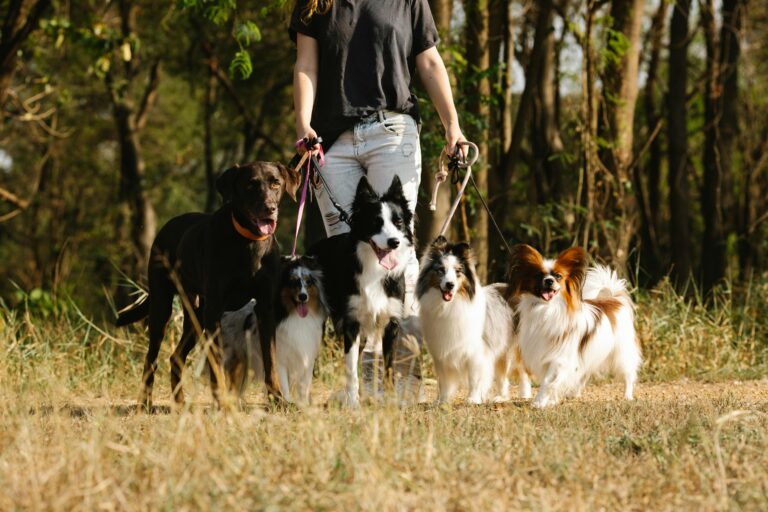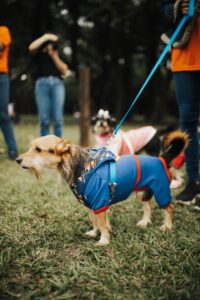Group Settings Can Challenge Even Well-Trained Dogs
Whether you’re attending a group training class, a local dog event, or a public obedience demo, summer is full of high-energy, distraction-heavy environments. These settings offer incredible training opportunities — but they can also reveal just how much more your dog still needs to work on focus.
If your dog becomes overstimulated, distracted by other dogs, or forgets commands in group settings, this post is for you.
Step 1: Practice Focus at Home First
Before introducing your dog to the chaos of a group:
- Build a strong “watch me” or “look” command
- Reward eye contact and check-ins frequently
- Add mild distractions like background TV or movement
- Increase duration before rewarding
A dog that doesn’t focus at home won’t suddenly focus in a crowd. Sharpen the skill where there’s the least pressure.
Step 2: Use Distance to Manage Arousal
If your dog becomes reactive or highly distracted around other dogs:
- Don’t dive straight into the center of the group
- Start at the edges, where stimulation is lower
- Use those early minutes for engagement and neutral observation
- Gradually move closer as your dog maintains focus
Distance is a training tool — not avoidance.
Step 3: Keep Sessions Short and Clear
In stimulating environments, it’s better to aim for:
- 5–10 minutes of clear obedience
- Breaks in a crate or on “place”
- Another short session of focused reps
Too much time in a chaotic environment can fry your dog’s nervous system. Breaks preserve your progress.
Step 4: Limit Unstructured Socializing
Letting dogs “say hi” before training often destroys focus. Instead:
- Keep your dog working, not socializing
- Reinforce neutrality around other dogs
- Only allow calm, structured greetings (if at all)
- Advocate for your dog — not every interaction is necessary
The best group classes teach dogs to focus despite other dogs — not because they get to play with them.
Step 5: Reward Engagement, Not Just Obedience
Engagement means your dog wants to be with you. Don’t just reward sit-stay positions — reward:
- Spontaneous eye contact
- Turning toward you when distracted
- Following your movement smoothly
- Calm demeanor in high energy zones
The more your dog sees you as the center of the experience, the easier the group setting becomes.
Step 6: Use the Environment as a Test — Not a Threat
Events, fairs, or classes are great ways to test how solid your training really is. But they’re not the time to start training new skills.
Go in with:
- Realistic expectations
- Clear criteria for behavior
- The willingness to leave if needed
- A calm, patient mindset
You’re there to reinforce reliability — not seek perfection.
Final Thoughts: Group Settings Build Real-World Reliability
Training around other dogs, people, and distractions is one of the fastest ways to strengthen your dog’s focus. But success comes from strategy — not stress.
Stay present, advocate for your dog, and treat every group setting as a leadership opportunity. When your dog knows how to tune in to you in a sea of chaos, you’ve truly earned their trust.


